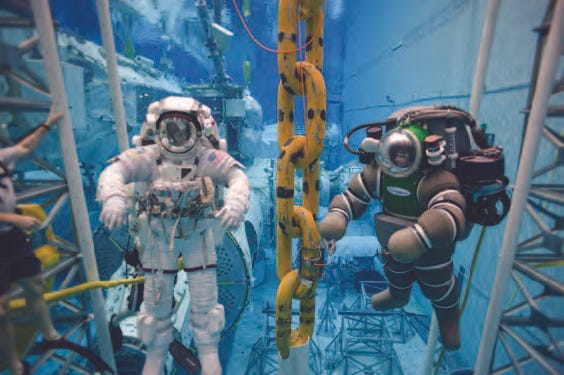The Career Progression of an Astronaut
From Selection to Space Missions - A Deep Dive into the Journey
To start, let’s examine this brief piece as part of the news report.
When Sunita Williams and Butch Wilmore returned to Earth in March 2025, they were hailed as heroes. What began as an eight-day mission to the International Space Station stretched into nine and a half months after technical issues with Boeing’s Starliner left them stranded in orbit for an additional 278 days.
Despite the extended stay, the two NASA astronauts won’t receive any overtime pay. Their status as federal employees means they draw a fixed salary—no weekend bonuses, no holiday pay, and certainly no outer-space overtime.
This article examines the career progression of astronauts, with a focused analysis of NASA's structured pathways. Our research draws exclusively on publicly available documentation from the U.S. space agency, whose long institutional history has yielded clearly defined astronaut selection and training protocols. While we concentrate on NASA's established framework, we note that other space agencies typically follow similar organizational patterns in their astronaut programs.
Introduction
Becoming an astronaut is one of the most prestigious and challenging career paths in science and engineering. Only a select few are chosen from thousands of applicants, and the journey from selection to spaceflight involves rigorous training, specialized education, and years of preparation. This article explores the career progression of an astronaut, with a focus on NASA’s selection process, mandatory and optional training programs, and the salary structure at different stages.
1. Astronaut Selection: The First Hurdle
Basic Eligibility Criteria (NASA)
To apply as a NASA astronaut, candidates must meet the following minimum requirements:
Citizenship: U.S. citizenship (for NASA; other agencies like ESA or CSA have their own rules).
Education: A master’s degree in a STEM field (engineering, biological science, physical science, computer science, or mathematics) from an accredited institution.
Experience:
At least two years of related professional experience (or 1,000 hours of pilot-in-command time for pilots).
Alternatively, a completed MD/DO degree or test pilot school program.
Physical Fitness:
Pass the NASA long-duration flight astronaut physical (20/20 vision, blood pressure under 140/90, height between 62 and 75 inches).
Selection Process
NASA’s astronaut selection is highly competitive, with acceptance rates below 1%. The process includes:
Initial Application Review – Thousands apply, but only a few hundred move forward.
First Round Interviews & Medical Tests – Psychological and physical evaluations.
Final Interviews & Team Exercises – Assess teamwork, leadership, and problem-solving.
Final Selection & Announcement – Typically, 10-12 candidates are chosen per cycle.
2. Astronaut Career Progression
Once selected, astronauts go through multiple stages before flying to space:
A. Astronaut Candidate Phase (1-2 Years)
Basic Training:
Spaceflight Fundamentals – Orbital mechanics, life support systems.
Survival Training – Water (neutral buoyancy lab) and wilderness survival.
Robotics & Spacewalk Training – Canadarm2 operations, Extravehicular Activity (EVA) in the Neutral Buoyancy Lab.
Russian Language Training – Required for ISS missions (Soyuz & Roscosmos collaboration).
Technical Assignments – Supporting ongoing missions (e.g., CAPCOM in Mission Control).
B. Active Astronaut (2-5 Years Before First Flight)
Advanced Mission Training:
ISS Systems Training – Learning every module of the International Space Station.
Simulations – Emergency scenarios (fire, depressurization, ammonia leaks).
Specialization Training – Science experiments, payload operations, or piloting.
Assigned to a Mission – After training, astronauts wait for a flight assignment (may take years).
C. Senior Astronaut & Leadership Roles (Post-Flight)
Multiple Missions – Some astronauts fly 2-3 times (e.g., Peggy Whitson: 3 long-duration ISS missions).
Management Roles – Becoming Chief Astronaut (like Chris Cassidy) or transitioning to NASA administration.
Retirement & Post-NASA Careers – Many become professors, consultants, or industry leaders (e.g., Scott Kelly in aerospace advocacy).
3. Mandatory vs. Optional Training
Mandatory Training (All Astronauts)
Spacewalk (EVA) Certification – 6-7 hours underwater per 1 hour of spacewalk training.
Soyuz & Commercial Crew Vehicle Training – SpaceX Dragon & Boeing Starliner procedures.
ISS Systems Proficiency – Operating life support, communications, and emergency systems.
Robotics (Canadarm2) – Capturing cargo spacecraft like Cygnus or Dragon.
Optional/Specialized Training
Deep Space Missions – Orion spacecraft training for Artemis Moon missions.
Scientific Research Focus – Specializing in biology, geology, or astrophysics experiments.
Test Pilot Skills – For astronaut-pilots (especially for future lunar landings).
4. Salary Structure of an Astronaut
NASA Astronaut Pay Grades (2024 Estimates)
NASA astronauts are civil servants, paid under the Federal Government’s General Schedule (GS) scale, typically between GS-12 to GS-13 (early career) and GS-14 to GS-15 (senior astronauts).
Military Astronauts receive their military pay grade + additional allowances.
Private Space Companies (e.g., SpaceX, Blue Origin) may offer higher salaries but fewer flight opportunities.
Becoming an astronaut is a lifelong commitment requiring exceptional education, physical fitness, and mental resilience. From selection to spaceflight, the journey takes years of training, specialization, and teamwork. While NASA remains the gold standard, new opportunities in commercial spaceflight are emerging. For those who make it, the reward is not just the salary—but the chance to push human exploration further than ever before.





